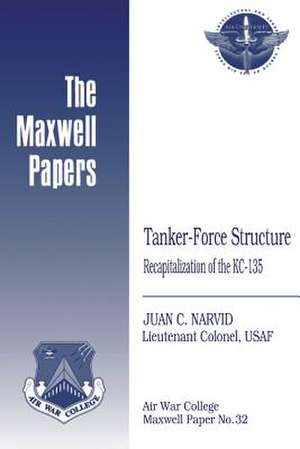Tanker-Force Structure
Autor Lieutenant Colonel Usaf Juan C. Narvid Contribuţii de Air University Press, Air University Pressen Limba Engleză Paperback
Preț: 86.04 lei
Nou
Puncte Express: 129
Preț estimativ în valută:
16.47€ • 17.01$ • 13.70£
16.47€ • 17.01$ • 13.70£
Carte disponibilă
Livrare economică 04-18 martie
Preluare comenzi: 021 569.72.76
Specificații
ISBN-13: 9781479382057
ISBN-10: 1479382051
Pagini: 40
Dimensiuni: 152 x 229 x 2 mm
Greutate: 0.07 kg
Editura: CREATESPACE
ISBN-10: 1479382051
Pagini: 40
Dimensiuni: 152 x 229 x 2 mm
Greutate: 0.07 kg
Editura: CREATESPACE
